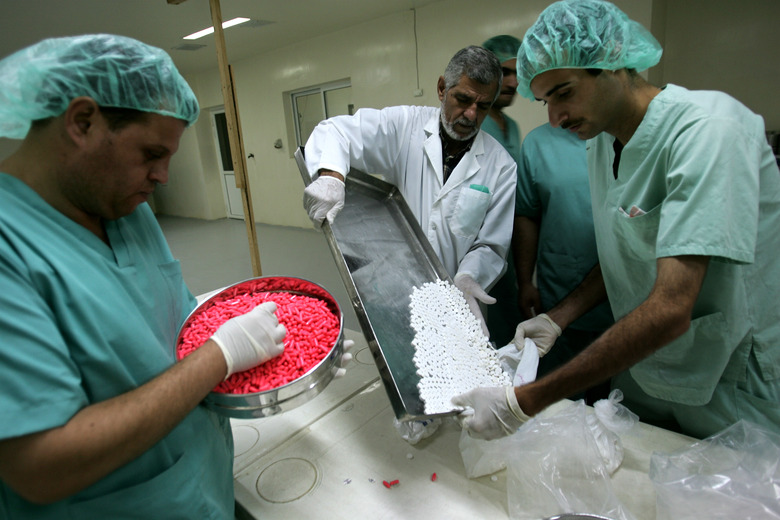Where Is Titration Used In Industry?
Imagine that you belong to a science club in which people who like to discuss chemistry invariably travel in threes. You know how many trios, and therefore people, your club includes. Your club has planned an upcoming social event with a similar group across town, except that this group discusses physics and always dispatches members in twos (pairs) instead of threes.
At the upcoming event, you know that your group and the physics group will meet at a downtown convention center and pair off randomly by group, not by person.
Unfortunately, the physics group is disorganized and can't tell you in advance how many people, and hence pairs, they will send to the event. It might be too many, too few or just the right amount for the number of chem trios you intend to supply.
You can allow your chemistry folks to filter into the convention center and pair off with physics duos until this is no longer possible because one or both groups run out of unpaired sets and a red flag goes up at the door.
You may recognize that if you keep track of how many pairings your trios took part in, you can calculate how many pairs, and thus people, the physics group offered (at a minimum). This is the essence of chemical titration, a necessary process across a swath of industries, and the analogy will soon become clear thanks to those clever chemistry people!
Titration Defined
Titration Defined
Given the scale of titration in industry, knowing what is is at the chemistry level is important.
Titration is the name for a programmed reaction meant to determine the concentration of a solution with a known composition. A solution called a titrant (one reactant) with a precisely known composition and concentration is slowly added to the solution of unknown concentration (which becomes the other reactant).
The key is also knowing how the molecules forming the respective solutions interact in terms of their molar ratios. For example, in the titration of a known volume of acetic acid of unknown concentration with sodium hydroxide (shown below only as the hydroxide ion OH−), water and acetate ion is gradually formed:
CH3CO2H + OH−⟶ CH3CO2− + H2O
If you know the concentration of sodium hydroxide added, you can determine the number of moles of acid consumed in a series of involved but straightforward calculations. Think about how this relates to the scenario described in the introduction.
Titration in the Pharmaceutical industry
Titration in the Pharmaceutical industry
Various industrial titration procedures are used in the pharmaceutical industry. These types of titration include:
- Purity analysis, in which acid-base titrations are often used. A good example is the purity control of the drug ephedrine, found in some cough syrups. An acid called perchloric acid is used as the titrant in this reaction.
- Content analysis, wherein redox (oxidation-reduction) reactions are used to establish the purity of raw materials, including binding substances in oral medications, rather than the end product itself.
- Precipitation titrations, which result in the formation of a solid product. One example is the antifungal drug clotrimazole.
- The pH-stat titration, which is used to determine the acidity of drugs, check the purity of enzymes made and investigate the speed and other characteristics of relevant chemical reactions.
Titration in the Wine Industry
Titration in the Wine Industry
In the wine industry, where quality and hence chemical precision are paramount, titration is used to determine acidity in multiple ways and also to evaluate sulfur dioxide content.
Although advanced techniques such as gas chromatography or liquid chromatography are usually unavailable to most wineries for practical reasons, titration is nevertheless critical to ensure the consistency of products sold.
Cite This Article
MLA
Beck, Kevin. "Where Is Titration Used In Industry?" sciencing.com, https://www.sciencing.com/list-5772040-titration-used-industry-/. 9 March 2020.
APA
Beck, Kevin. (2020, March 9). Where Is Titration Used In Industry?. sciencing.com. Retrieved from https://www.sciencing.com/list-5772040-titration-used-industry-/
Chicago
Beck, Kevin. Where Is Titration Used In Industry? last modified August 30, 2022. https://www.sciencing.com/list-5772040-titration-used-industry-/
